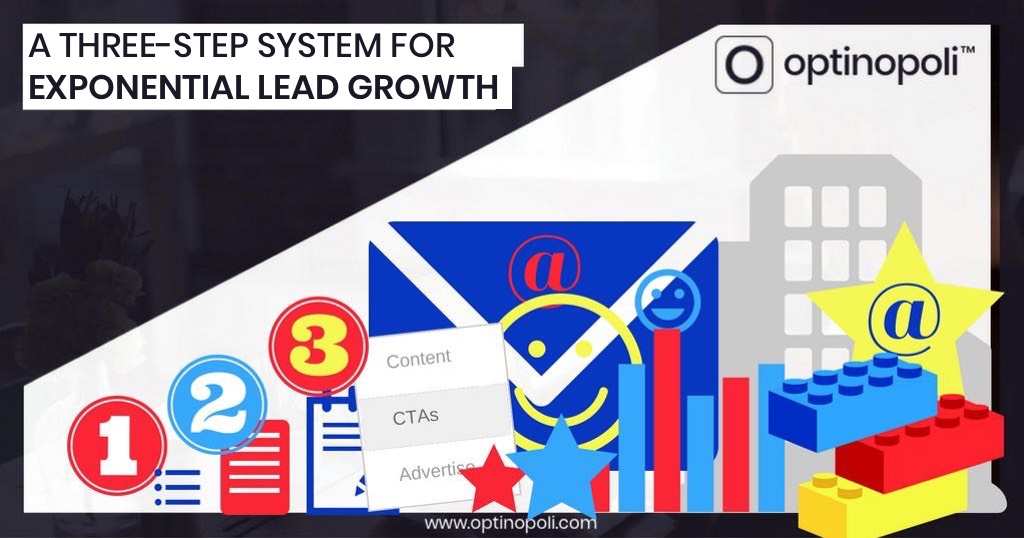
A Three-Step System for Exponential Lead Growth
Ever wondered how some businesses struggle to get a regular flow of quality leads, while others have more leads than they can handle, giving them rapid and profitable growth?
The secret’s in the system.
This post shares with you a proven, powerful three-step system you can put into action today, along with four prime examples of businesses in different industries that have used it to grow to 7-figures and beyond.
The system enables you to:
- Attract targeted, quality leads you can convert into sales revenue.
- Scale your activities, giving you potentially exponential lead growth.
It all starts with a single step. Presuming you continue to follow the system, your results will naturally grow over time.
“One may walk over the highest mountain one step at a time.”

Regardless of your industry, unless content is a central part of your marketing, your potential for attracting leads—and leads of the right quality—to your business is going to be limited.
In fact, content marketing generates 3 times as many leads, and costs 62% less, than traditional marketing.
It’s why, according to research from the Content Marketing Institute and Marketing Profs, the vast majority of businesses are either increasing or maintaining their budgets for content marketing activities.
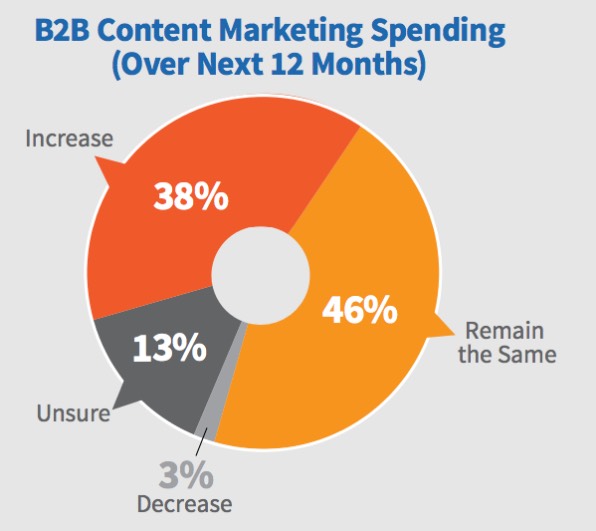 Source: 2018 B2B Content Marketing Trends—North America: Content Marketing Institute/Marketing Profs
Source: 2018 B2B Content Marketing Trends—North America: Content Marketing Institute/Marketing Profs
Content is of course central to the web. It’s what we all consume on a daily, often hourly, basis.
Customers in your market are actively looking for content related to your industry. By providing it to them, you get seen by your marketplace. The value you provide affords you credibility and authority, attracting prospective customers to you.
What’s more, one piece of content can be used in a multitude of ways to feed your presence on multiple content platforms where your market is spending their time.
For example, a single blog post can be repurposed as:
- Social media posts.
- Articles on other sites.
- One or more videos.
- A Slideshare presentation.
- A podcast episode.
- And more...
In other words, by consistently building your presence on the web with content, as a natural consequence you’ll start to attract relevant people who are interested in what your business does.
Consistently create helpful, relevant content—and you’ll almost automatically attract quality, relevant leads #LeadGrowth #CreateContent via @optinopoliClick To Tweet Photo credit: Roger Karlsson
Photo credit: Roger Karlsson
Determine Your Core Content
Start by determining the central pillar of your business’s content strategy. This is your core content, from which each piece of content can then be adapted into different formats to reach more of your market.
A blog is one of the most popular choices, but it might just as easily be a video channel, or regular podcast. It depends on the type of content for your business that will be the easiest and most natural to produce on a regular basis. Regular, consistent output is essential.
Regardless of where you start, this core content can then be repurposed into one or more other formats and published on different content platforms to get in front of your market and attract them to you.
For example, let’s say your core content is video. You might publish to say a YouTube channel, but you can also publish it on your blog along some accompanying text such as a transcript.
If resources allow:
- The transcript can be further adapted into a standalone article (say to publish as a guest post elsewhere).
- The video can be dissected into several smaller videos to post on social media.
- The video can be repurposed into a Slideshare presentation.
- And so on.
But don’t worry if the idea of repurposing sounds a little daunting at first. The essential part is that your business starts to regularly create and publish content. The rest can follow later as your activities expand.

Build an Audience
By consistently creating and publishing content on your website and across other platforms, you start to build an audience.
Build an #audience by consistently creating and publishing content #leadgeneration via @optinopoliClick To TweetYour audience includes:
- Followers on social media.
- YouTube subscribers (strictly speaking, this is social media too).
- Blog subscribers.
- People who have consumed your content at least once, and may have even engaged with you, but aren’t yet followers or subscribers.

As your audience numbers and engagement levels increase, along with the social proof that affords, a snowball effect can develop, attracting even more people to you.
However, in terms of the value those in your audience represent for your business, it depends on where they currently exist within an inverted pyramid or ‘engagement funnel’. The lower down this engagement funnel people in your audience are:
- The more they are engaged with you.
- The more you are able to engage with them and attract their attention.
- The more valuable they are for your business.
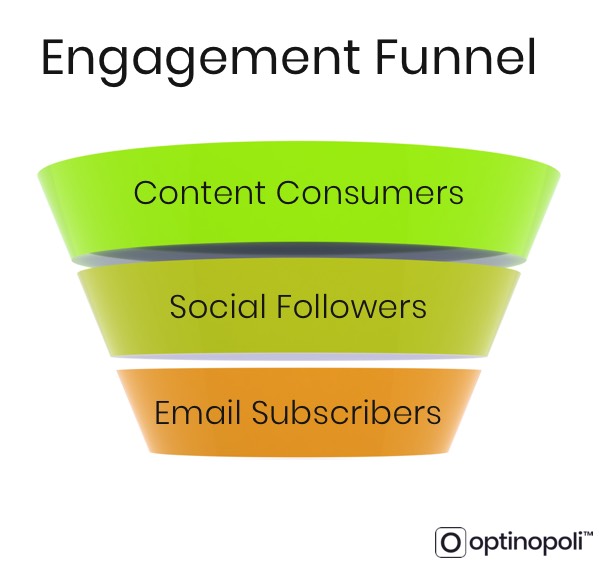
The very top consists of people who have come across and consumed your content, wholly or in part, at least once. In other words, they have gained some familiarity with your brand and are likely to recognize other content you have published when they come across it.
On the next level down are those who have subscribed to you or followed you on social media channels. This means:
- They have raised their hand as someone who is interested in your content.
- It is more likely they will see your content in future.
In other words, they are engaged more closely with your brand, but:
- They are on a platform you don’t control. For example, your business may have thousands of followers on Twitter, but the Twitter account could be closed tomorrow.
- It is one-to-many communication—with the odd exception, you generally can’t communicate with them directly on an individual, personalized one-to-one basis.
So it’s a slightly deepened relationship, but still a relatively weak one.
At the bottom of the engagement funnel are those who are subscribed to receive your content via email.
This segment of your audience is the most valuable because:
- They have agreed to receive your content direct to their inbox, signalling a deepened level of interest in and engagement with your business.
- You fully control the platform. In other words, as a business you ‘own’ the email addresses in your database and the ability to send messages to them.
- It is direct, one-to-one communication. Yes, you will generally send out emails on a one-to-many, broadcast basis. But your message lands directly in their inbox, you can potentially personalize the message for that individual (such as by using their first name), and you could potentially send them a single, individualized email if so desired.
Your goal, with the content you produce, should be to continually move people down this engagement funnel until you’re able to email them directly.
The goal of your #content is to move people through your engagement funnel until you can email them directly #leadgeneration via @optinopoliClick To TweetThis means you should continually provide opportunities for those higher up your engagement funnel to subscribe via email to get your latest content.
You can do this for example by providing:
- Offers on your blog that encourage visitors to subscribe. This might include sidebar and end-of-post subscription forms, and dynamic lead capture devices such as smartbars and popups.
-
Calls to action (CTAs) within content on other platforms, linking to a page such as a Landing Mat where they can subscribe. For example:
- On social platforms like Facebook, Twitter and LinkedIn, as well as linking back to content on your blog from where visitors can subscribe, you can also post subscription CTAs directly, offering a lead magnet of some kind in return for their email.
- On YouTube, provide a CTA within the video itself as well as in the description. For example, you might have a downloadable resource to accompany a video that people can access via an email signup form.
- Include a CTA within the bio on guest posts published on other blogs, and within content published on Medium and elsewhere.
Generally these CTAs will offer a relevant info-based lead magnet to the visitor such as an email course, a downloadable short report, or a set of free videos. Or simply offering to send them your latest content on a regular basis.
Note that whatever you offer at this stage isn’t designed to try to sell to them. It’s simply to:
- Provide immediate, easily accessible value.
- Illustrate expertise.
- Build trust with the visitor.
While it may seem counter-intuitive, one of the main purposes of your content is not to sell, but to simply begin a relationship with potentially interested people in your marketplace.
The aim is to attract people to your content who want to continue hearing from you enough to leave you their email address so you can do so.
This is the most valuable segment of your audience.
Although you might have someone’s email address, they are not yet a sales lead. They are simply interested in the content your business produces.
However, as we will see shortly, you can now provide opportunities for them to signal their interest in the products and services you are selling.
In other words, the bottom of your engagement funnel consists of people who you can generate valuable sales leads from.
Because of their existing relationship with you, the sales process with these leads becomes a lot easier, more natural and potentially more profitable compared with trying to ‘sell’ to cold prospects who don’t yet know, trust or like you enough to do business with you.
Use #content to build an audience, capture email subscribers, and harvest sales leads #leadgeneration via @optinopoliClick To Tweet Photo credit: USDA
Photo credit: USDA
Harvesting Leads
Think of the farmer who plants a seed, carefully and lovingly nurtures it, sometimes for an extended period. Then one day she harvests it to reap the rewards of her hard work, bringing revenue into her business.
Lead generation should be approached in a similar way.
Those who are impatient and try to harvest too soon are likely to achieve weak and disappointing results.
Such an approach is likely to simply antagonize the prospect, as the business needs to ‘hard sell’ in order to make the sale. While there may still be buyers, it’s not without cost:
- Those who buy are unlikely to feel positive about it further down the road.
- There will be unnecessary resistance during the sales process itself.
- Customers may resist future attempts to sell to them because they feel in some way they were manipulated into buying.
- You potentially lose referrals to other customers, and may even never reach potential customers you could have otherwise attracted because of word-of-mouth negativity.
The approach tends to see sales leads as a one-time source of revenue to be exploited.
Instead, they should be regarded as an asset to the business that has repeatable, long-term value, and given the respect they consequently deserve.
In other words, the approach outlined here focuses on creating a buyer who continues buying from your business over the course of months and years, thanks to the relationship the business has built with them.
Create long-term buyers by giving value to subscribers and sales leads long before you ask for the sale #leadgeneration via @optinopoliClick To TweetHere’s how that works.
Let’s extend the engagement funnel referred to above. Once someone has joined the email list and subscribed to receive content from your business, the task is now to convert them into a sales lead.
In other words, you want to move them further down the funnel, and closer towards becoming a customer.
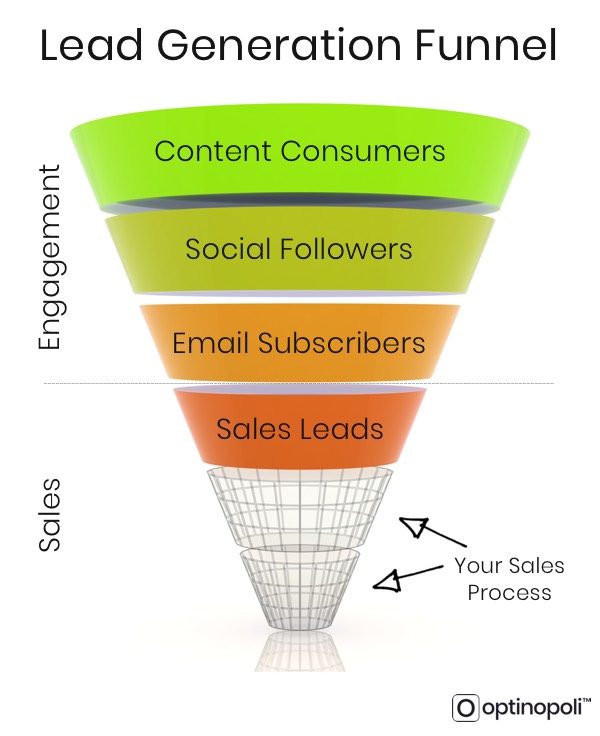
In fact, it may be easier to see the process now as two separate funnels. Effectively you want the person to drop from the bottom of your engagement funnel to the top of your sales funnel.
It’s not about trying to sell to them while they’re still in your engagement funnel. Instead, you’re providing opportunities for them to raise their hand and signal their interest in what you have to sell.
You then lie back and wait for them to come to you. When they do so, you can follow up with your sales process.
Here are a few examples of the type of opportunities that may be offered to them:
- An opportunity to get your offline hard-copy sales catalog sent to them in the post.
- An opportunity to sign up for your upcoming webinar, which explains how your product or service benefits them.
- An opportunity to get your whitepaper that in effect lays out why your product or service would be advantageous.
- An opportunity to book a free initial consultation.
- An opportunity to get a quote.
You may of course have multiple different opportunities available to them, designed to appeal to the different types of prospect in your market.
Such opportunities can be made available by:
- Including an ad in emails sent to content subscribers. This can be as simple as a ‘P.S.’ after the main body of the email, or perhaps a banner in the email signature.
- Sending periodic email broadcasts, such as an invitation to an upcoming webinar.
- A follow-on ad campaign on your website shown only to existing subscribers, for example via Smart Campaigns.
- Retargeting ads—show subscribers ads relating to the opportunity as they visit other websites and browse social media.
Your sales leads will in effect, by taking advantage of such an opportunity when they are ready to do so, be subscribing to a different list (email, as well as potentially regular mail and telephone follow-up). In doing so, they will be requesting sales-oriented information, and you’ll then be able to follow up with them via your regular sales process.
The result can be higher sales conversions, simply because:
- These leads have a pre-existing relationship with you built on trust and the sense of value you’ve already provided to them.
- The lead is definitely interested in what you are selling.
For example, some sales leads may have been on your regular email list for months if not years. The regular information you’ve been sending them means you become first port of call when they are ready to buy what you are offering.
So it’s clear how the first two steps in this process—Content and Capture—attract leads to your business very effectively.
So how do you then expand your activities and attain potentially exponential levels of growth? That’s covered in the third step of this system as follows ...

In brief, you scale up through advertising.
Organic growth can certainly be powerful and beneficial, but ultimately you have no control or certainty:
- You’re dependent on a third-party platform to give you reach based on how their algorithm currently works—as many marketers are only too aware, that can change overnight and often without warning.
- There is little control over who you reach. It’s relatively imprecise and subject to constant change.

In contrast, with advertising:
- You’re in full control—your ability to reach your market is dependent only upon your ability to pay the required fees and to use the advertising platform in question effectively.
- You determine with far higher levels of accuracy exactly who you want to reach.
Not only that, but advertising allows you to reach a far larger slice of your market than organic channels alone would enable you to do.
Scale #LeadGeneration through advertising—try Facebook Lead Ads, Twitter Ads and Google #PPC via @optinopoliClick To TweetOnce you’ve developed a profitable advertising channel, you can scale by:
- Increasing your advertising expenditure in that channel to reach more of your market.
- Develop additional advertising channels.
However, don’t make the mistake of assuming a new advertising channel for your business will be immediately profitable. Most of the time it won’t be.
It takes time and a certain level of initial investment to test out and determine exactly what works and what doesn’t, and to optimize the process enough to make it profitable.

Where to Start
Start with a single advertising channel, and get that working profitably before moving onto others.
Advertising opportunities abound. The top players include:
- Facebook—for example, Facebook Lead Ads
- Twitter Ads—Wordstream’s founder, Larry Kim (now of MobileMonkey), has a great article on putting them into effective action for lead capture.
- LinkedIn advertising.
- Google PPC—briefly described below.
The advertising you choose should focus primarily on adding more people into the top of your engagement funnel.
In other words, your immediate aim should be to add subscribers to your email list. Once on your list, you can then work on following this process through in terms of converting them into sales leads, and from there into customers.
Start by analyzing your existing content and the results achieved so far. Look for content that’s achieved higher levels of engagement, including the number of subscribers it’s attracted, and test extending the reach of the content through native advertising.
For example, try boosting the post on Facebook. You can do something similar on LinkedIn, Twitter, and other networks.
You may also like to try using Google PPC. Your content may already be attracting traffic organically through long-tail keywords. These keywords can be relatively free of competition on Google Ads, allowing you to propel your content to the top of search for just a few cents a click.
Attract leads by advertising your content via long-tail keywords on #GoogleAds #PPC via @optinopoliClick To TweetAs an example, let’s say the content converts 10% of visitors into email subscribers, and you’re spending just $0.10 per click. This gives you subscribers for just $1 each, often far lower than you may achieve through most other channels.
As long as each new subscriber is worth at least $1 on average over time, you can achieve a positive ROI.
Remarketing
Use remarketing to boost the profitability of your other advertising campaigns.
For example, let’s say you’re boosting a particular piece of content on Facebook. You know that those who visited were interested in your content.
What if you could give a nudge to those who visited but for whatever reason didn’t opt in at the time?
Remarketing allows you to do exactly that. For example, you could simply show them a reminder of your opt-in offer, linking straight to a dedicated Landing Mat allowing them to opt in.
It could also be that a different opt in offer may have more appeal, so test out different approaches. For example, try offering them the same content but in the form of a downloadable report.
Use #remarketing to convert visitors into subscribers—even if they didn’t opt in the first time #leadgeneration via @optinopoliClick To Tweet
Measuring Results
Of course, you need to be able to measure the results your advertising achieves, including:
- Visitors who converted into email subscribers.
- Those who become customers, and the revenue achieved.
Because of the different lengths of time email subscribers will take to convert into customers, you need a more immediate way to estimate the profitability of campaigns and assist decision making.
That means being aware of the average value of each email subscriber to your business. For example, if you know that over a period of X months, an average X% of your email subscribers convert into sales leads, and X% of those into customers bringing you X amount of revenue, you can make reasonably effective decisions on that basis.
However, in the early days this will only be an estimate. It’s important to track the value of your subscribers over time by individual advertising channel, as this value can differ markedly. The more accurate your data becomes over time, the better you’ll be able to assess profitability.
Examples of High-Growth Businesses Using This Lead Generation System
Copyblogger Media
Brian Clark took Copyblogger Media from zero to an 8-figure technology company, using the power of a blog and an email subscription list.
He didn’t focus on sales at all to start with. Instead, his focus was an developing his audience, attracting over 200,000 email subscribers to his blog on online copywriting in less than two years.
Off the back of that trust and loyalty, he launched the Rainmaker Platform (a digital marketing SaaS product), and has since extended into growing a digital marketing agency.
Groove
This help desk software company used their blog to grow to over 5,000 email subscribers in just five weeks.
In fact, their blog and associated email list became their #1 driver of new customers, helping them grow to over 3,000 customers within two years.
“I signed up for Groove because I’ve been following your blog for a year and a half, and I recently changed jobs and now our company needs a new support platform.”
OpenView Venture Partners
OpenView Venture Partners, a venture capitalist company, used their content site, OpenView Labs, to attract over 35,000 subscribers.
Most companies joining their portfolio today come through as a result of subscribing to their blog and enewsletter.
Cheng Concrete
In case you think the approach outlined here wouldn’t apply to more mundane-sounding businesses, you can’t get more dull than concrete, right?
Fu-Tung Cheng used the power of content to become the world’s foremost concrete design expert, and attract industrial contracts worth millions of dollars for Cheng Concrete, along with a stack of prestigious design awards.
His content is simply designed to be helpful, not to sell, and to attract an audience of people interested in concreting. By building trust and a relationship with their audience, they are able to sell with ease once the customer is ready to buy.
To Conclude
As we’ve seen, this three-step approach—Content, Capture and Scale—can be used to achieve exponential lead growth for virtually any business, and as a result achieve rapid sales growth too.
In summary:
- Content—consistently create content that’s relevant and helpful to people in your marketplace.
- Capture the information of visitors to create an audience of email subscribers who want to continue receiving your content. Use this list to harvest sales leads by offering opportunities to receive information about your products and services when they’re ready to do so.
- Scale your lead generation activities through advertising such as native advertising, Google PPC and remarketing.

steve shaw
Steve Shaw is the CEO of optinopoli™, next-generation lead capture and sales conversion technology—click here for more info.




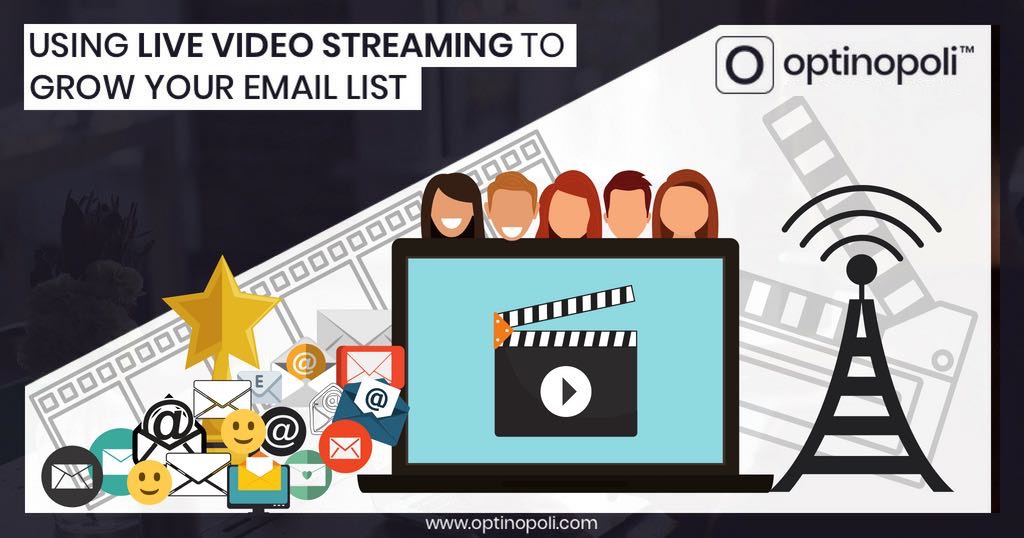

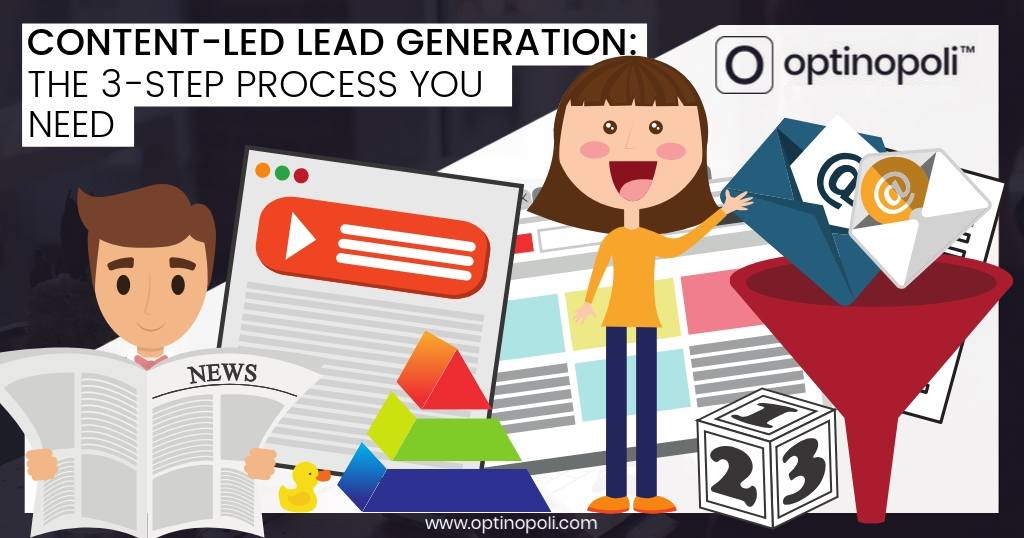
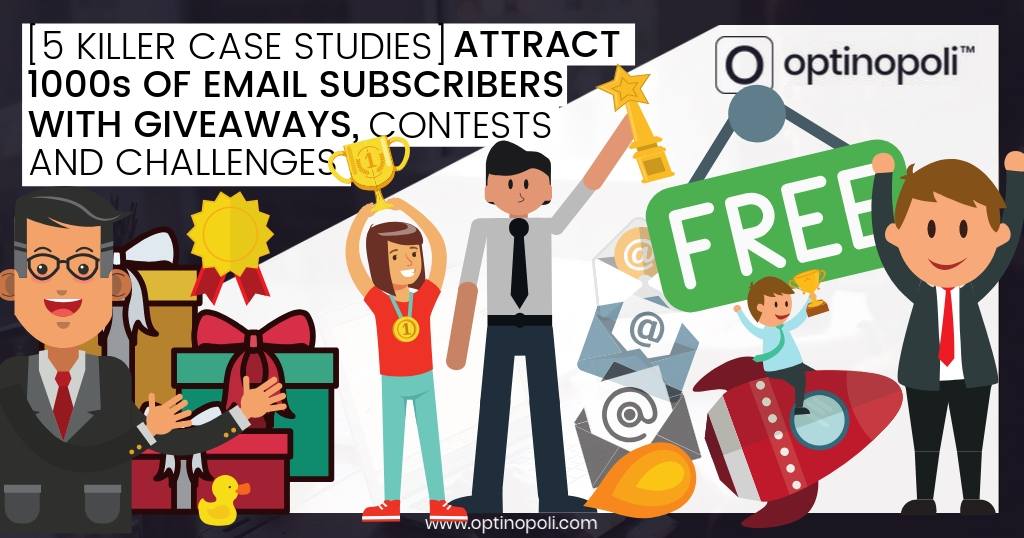
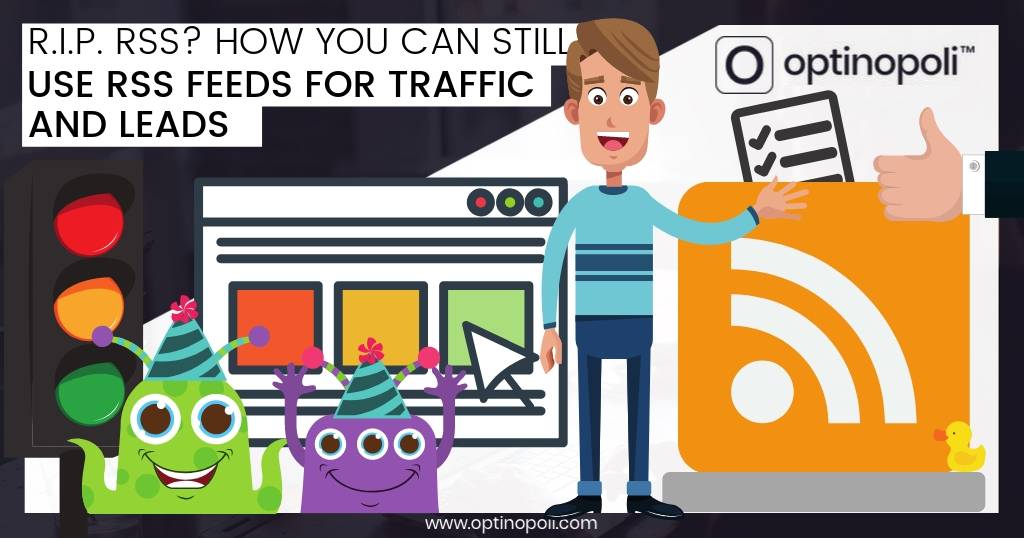
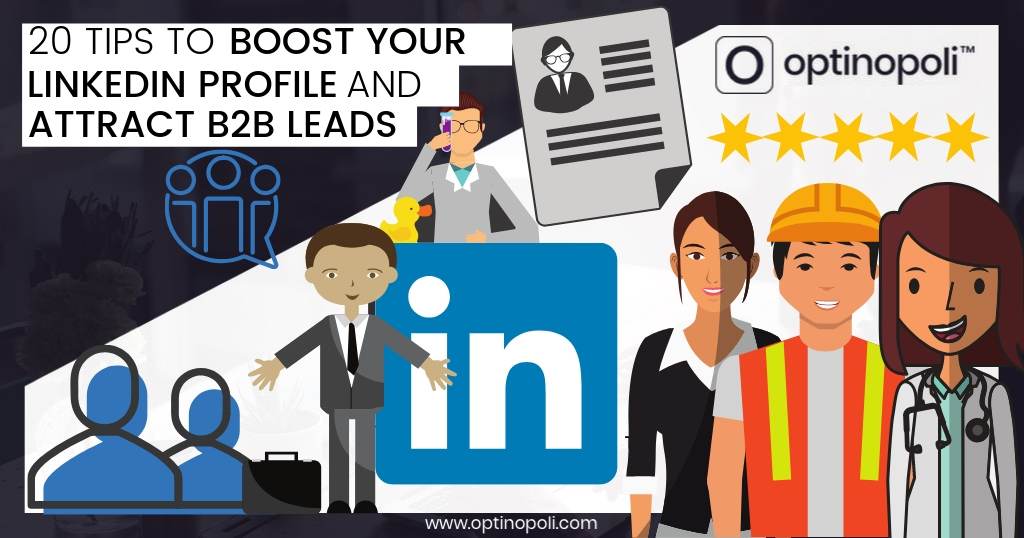
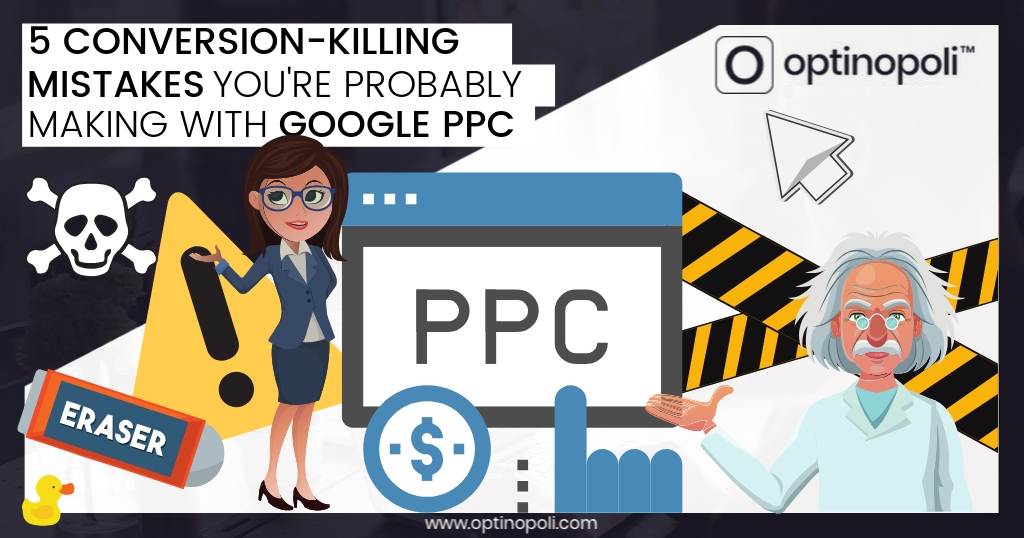
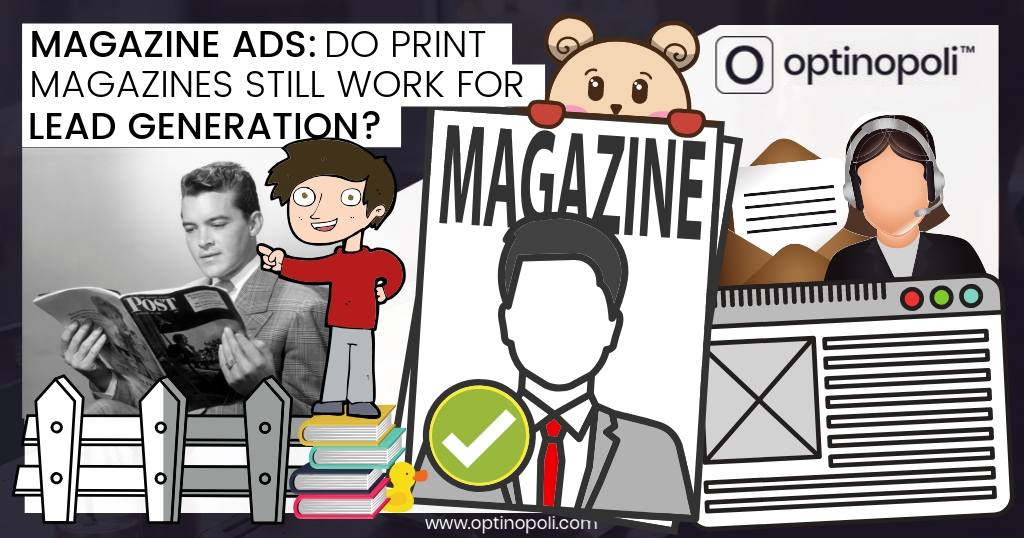
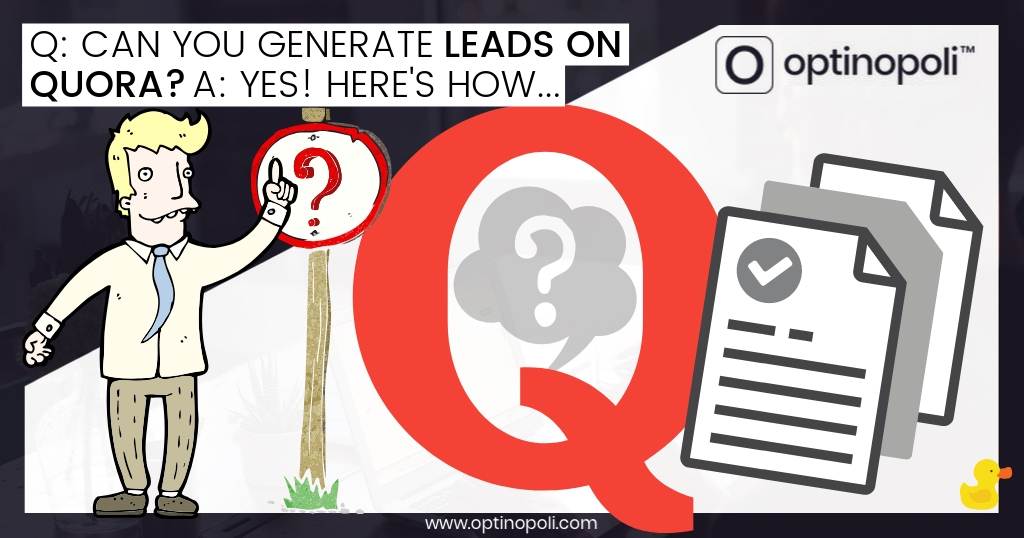
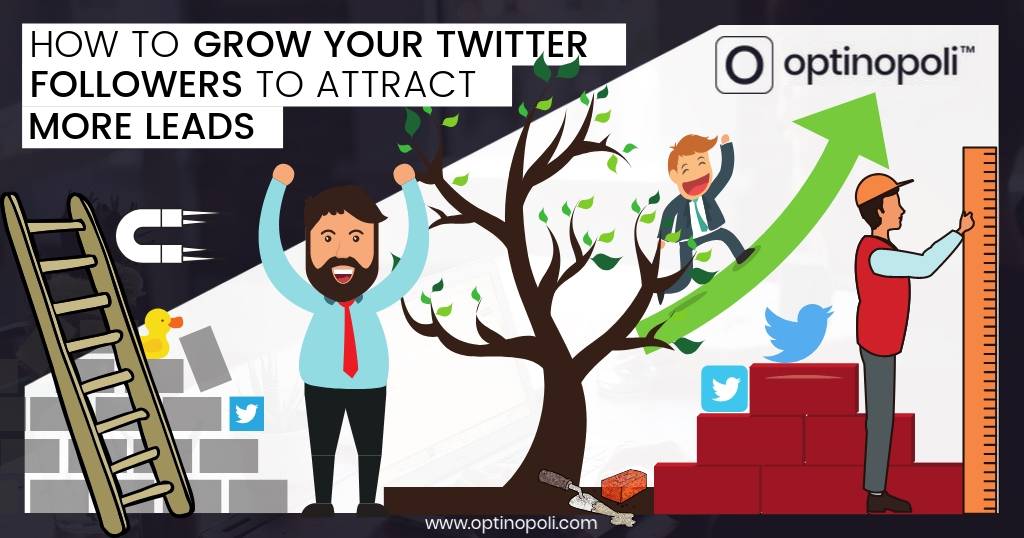
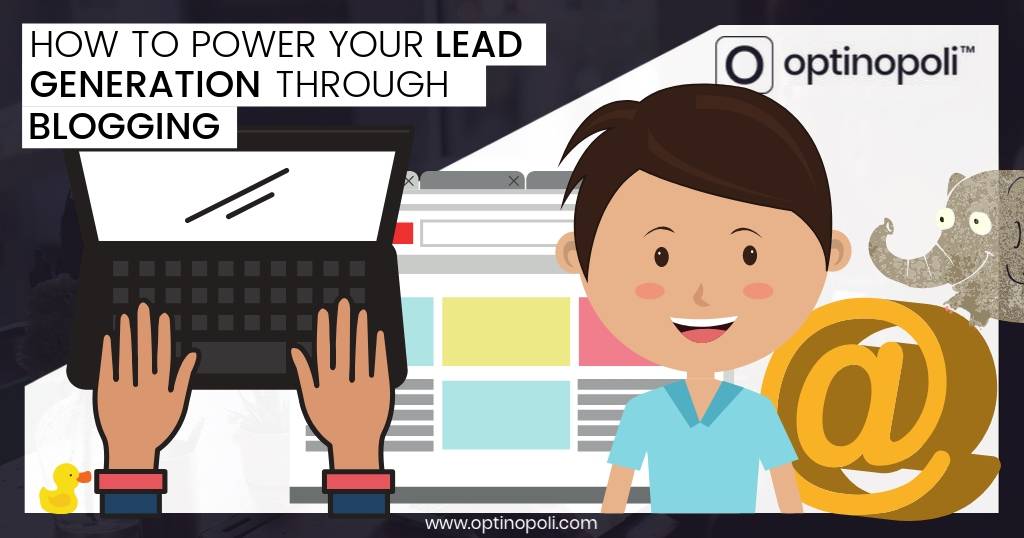
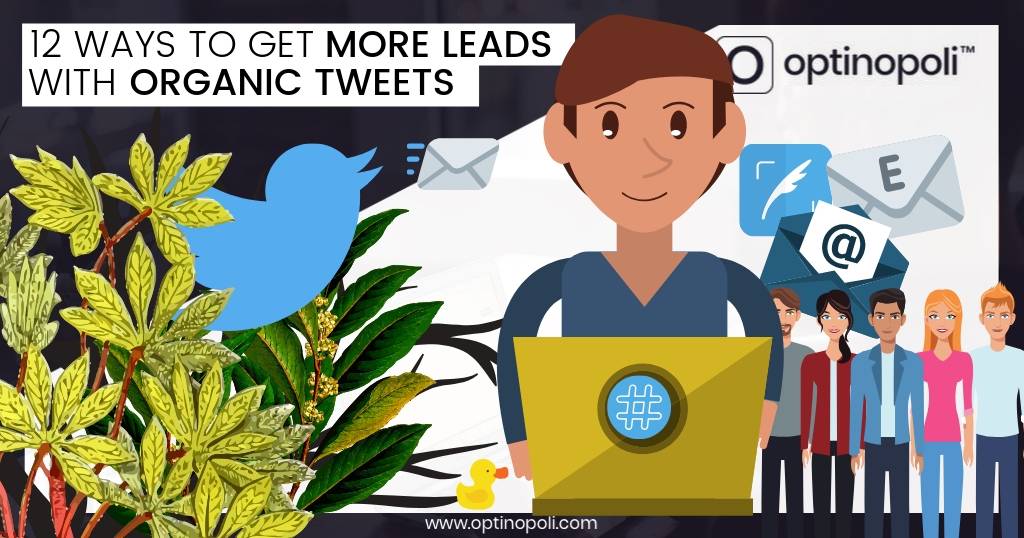
Comments